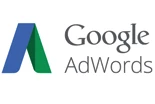Because even the smartest tools need smarter direction.
AI is brilliant at executing tasks, but not at making business decisions.
That’s something many growth-stage founders, marketing leads, and even product heads are realizing after their third abandoned MVP or yet another funnel that "should’ve worked."
At Refresh Ideas, we don’t take a position against AI—we use it. But we’ve also seen, time and again, that AI without human strategy isn’t a shortcut. It’s a loop.
Here are five real-world examples of what happens when people skip strategy in favor of AI-driven execution.
1. Great Content. Wrong Audience.
One e-commerce founder came to us after running hundreds of AI-generated blog posts. They were high-volume, well-structured, and utterly invisible to their actual buyers.
No conversions. No list growth. Just noise.
What was missing?
A clear buyer journey, a content architecture based on real customer motivations, and the strategic intent behind each topic. AI produced words. It didn’t craft relevance.
2. Smart Tech Stack. Dumb Workflow.
A growth-stage nonprofit we worked with had stitched together 5+ SaaS tools, most chosen by prompt-engineered AI suggestions. But the tools didn’t speak to each other, internal adoption was low, and the team was managing tech instead of impact.
What was missing?
Systems thinking. The kind that maps needs before solutions and respects the internal capacity of the people using the tools.
3. Visual Branding, Zero Brand Meaning
One startup used AI to generate its logo, tagline, and pitch deck. It looked slick. But when investors asked “Why now?” or “What problem are you solving uniquely?”—they had no answers.
What was missing?
Narrative. Context. Strategic positioning. AI gave them outputs, not insight.
4. Cost-Cutting That Costs More
We once inherited a web project that was started using AI-generated wireframes and code snippets. The founders thought it would cut time and cost. But what followed were months of rework, scope confusion, and technical debt.
What was missing?
Discovery. Human facilitation. A strategy-first roadmap that would’ve prevented the rebuild they eventually paid for twice.
5. Features Over Fundamentals
Another product team used AI to prioritize features based on competitor analysis and market trends. The backlog looked impressive—until user interviews revealed they were solving the wrong problem entirely.
What was missing?
Empathy.
Strategic clarity. Actual conversations with the people they were building for.
Where AI Ends and Human Strategy Begins
AI is a powerful tool for pattern recognition, execution, and speed. But strategy asks better questions. And in a world full of fast answers, asking better questions is your edge.
At Refresh Ideas, our Discovery process isn’t about slowing things down. It’s about building the kind of foundation AI can accelerate, not undermine.
Book a Discovery Session
If you're starting a project—or recovering from one that spiraled—let's talk. Because even the smartest tools need a human blueprint.
















